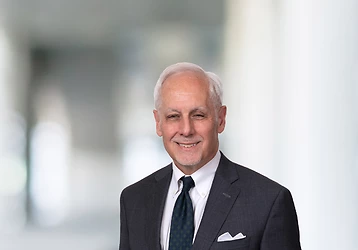Navigating the PPP Necessity Requirement: What Small Businesses Need to Know
The rollout of the CARES Act’s Paycheck Protection Program (PPP) has been fraught with confusion and frustration. Indeed, the “rules” of the PPP game seem to be ever-changing, leaving borrowers, lenders, lawyers, and accountants (among others) in a constant state of uncertainty as to how to properly comply with the intricacies of the CARES Act and related guidance.
One of the hottest issues and biggest concerns for small businesses is the so-called Necessity Requirement. Specifically, the PPP application requires that all borrowers certify in good faith that “[c]urrent economic uncertainty makes this loan request necessary to support the ongoing operations of the Applicant.” To date, though, there has been no substantive guidance or a concrete definition of what constitutes adequate uncertainty and need. Yet prominent politicians and SBA & Treasury representatives continue to stress that a failure to comply with the Necessity Requirement could result in adverse consequences to small businesses, citing several criminal statutes that are violated by providing false certification.
On April 23, 2020, the SBA issued guidance warning that public and private companies with the “ability to access other sources of liquidity sufficient to support their ongoing operations in a manner that is not significantly detrimental to the business” may not qualify for PPP loans. FAQs 31; 37. This guidance was in response to public backlash after certain national restaurant chains and other publicly traded companies applied and were approved for PPP loans. This guidance, however, arguably conflicts with the CARES Act, which expressly suspended the ordinary SBA requirement that borrowers must certify that they are unable to obtain credit elsewhere. 15 U.S.C. § 636(a)(36)(I). With its recent guidance, the SBA failed to provide any meaningful clarity to the factors a business must consider to meet the Necessity Requirement, and ultimately recover PPP loan forgiveness.
The above begs the question: What do small businesses need to know?
Zumasys Case
Businesses have challenged SBA’s recent guidance on the Necessity Requirement. Zumasys Inc., a California software company, and its two subsidiaries that received PPP loans totaling approximately $750,000, filed suit against the SBA and Treasury Department in federal court. Zumasys challenges SBA’s authority to promulgate FAQs 31 and 37, which could preclude eligible PPP borrowers if they have access to other sources of credit. Specifically, Zumasys argues that FAQs 31 and 37 re-impose the “credit elsewhere” requirement on PPP loans in direct contravention of the CARES Act. Of note, Zumasys admits that it has access to other credit facilities, but the uncertainty of current economic conditions and purpose of the PPP were reasons for requesting PPP loan funds to support ongoing operations. Zumasys claims that they are entitled to money under the CARES Act, and seek an order barring enforcement of the SBA’s guidance.
Zumasys’ arguments reflect the views of many other businesses that have received PPP loans. After receiving PPP funds and using those funds to retain employees and pay covered expenses, many businesses argue that the SBA’s guidance may: (1) result in businesses being deemed “ineligible,” requiring them to immediately repay the PPP funds, and subjecting them to possible civil and criminal penalties, (2) deprive employers of their eligibility to obtain loan forgiveness, and (3) place employers in a worse financial position than if they had furloughed or terminated their employees. Businesses are faced with the prospect of repaying PPP funds with money they either do not have or now must borrow, placing them in an even worse financial position.
At this time, the government has not filed any responsive pleading in Zumasys. Butzel Long will continue to monitor this case.
Safe Harbor under FAQ 46
Shortly after Zumasys was filed, the SBA provided a safe harbor for the Necessity Requirement. Specifically, any borrower that received a PPP loan less than $2 million will be deemed to have made the required certification in good faith. FAQ 46. In short, businesses receiving less than $2 million satisfy the Necessity Requirement - no questions asked. The SBA admits that the safe harbor allows it to conserve its enforcement resources for higher return loans (i.e., go after “bigger fish”). On May 18, 2020, the SBA issued the approved PPP Loan Forgiveness Application, which requires an applicant to certify whether it, together with its affiliates, received PPP loans in excess of $2 million. Accordingly, a borrower will need to include the loans received by any affiliates when determining if it exceeds the $2 million threshold.
The SBA warned that all PPP loans greater than $2 million are automatically subject to review. If SBA determines that a borrower lacked necessity, the SBA will seek repayment of the outstanding loan and will inform the lender that the borrower is ineligible for loan forgiveness. However, the SBA also stated that, as long as the borrower repays the loan in full after receiving the SBA’s determination, the borrower would not be subject to administrative enforcement or other liability.
Without explanation, the SBA stated that borrowers that do not satisfy the safe harbor may still meet the Necessity Requirement based on their individual circumstances. Businesses can be expected to demonstrate basic financial needs, such as:
- The economic uncertainty the business has faced or will face as a result of COVID-19, including the impact on its customer base, product or service affordability, and supply chain;
- How the business is expected to fare when compared with its budgeted revenues;
- The impact of increasing debt on future operations; and
- Limitations on accessing existing lines of credit.
Although the safe harbor under FAQ 46 arguably renders Zumasys moot, these same arguments challenging the SBA’s authority equally apply to businesses that received PPP loans greater than $2 million. The Zumasys case is nevertheless a preview of potential future litigation against the SBA regarding its implementation of the PPP and perceived “changing of the rules of the game.”
Potential Options for Small Businesses Not Meeting Safe Harbor
1. Return the PPP loan money.
The safest and easiest option would be to return the PPP loan money. This option may conflict with why businesses applied for PPP loans in the first place - presumably needing financial assistance during this economic crisis. This option further conflicts with Congress’s intent in passing the PPP to promote small businesses to retain and rehire their employees, especially when businesses are giving money back based on the government’s lack of clarity.
This option may also help smaller borrowers with concerns about their PPP applications other than the Necessity Requirement, though the technical return date has expired.
2. Retain the PPP loan money and hold until further SBA guidance.
The next option would be to retain, without spending the PPP loan money. This option seems attractive in light of the fact that the SBA continues to issue new and changing guidance almost daily. Future clarification by the SBA may solve a business’s uncertainties. Some businesses, however, may not have access to other liquidity to pay its employees or other covered expenses and thus must spend the PPP money. Again, this is why they applied for PPP loans in the first place. Another concern with holding onto the PPP money is that a business could end up not meeting loan forgiveness requirements by failing to spend the money on eligible costs during the 8-week covered period. Politicians have recently spoken about extending the 8-week time frame under the PPP.
There is an example of a justified “wait-and-see” approach. The SBA recently provided a safe harbor for borrowers who may have misunderstood the SBA’s foreign affiliation rules under the PPP. (Applicants must include employees of their foreign affiliates in determining whether they meet the “small business” threshold under the PPP). Under the safe harbor, those borrowers will “not be deemed to have made an inaccurate certification of eligibility solely on that basis.” Thus, at least for these borrowers, the “wait-and-see” approach worked.
3. Immediately use the PPP loan money and take their chances.
The next option would be to use the PPP loan money as intended. Businesses should follow the CARES Act and all SBA’s regulations and guidance (to the best of their ability). Businesses should also develop a written record supporting the good faith certifications in the PPP loan application. Indeed, the recently issued forgiveness application requires such necessity documentation to be retained for 6 years. There is a certain level of risk with this option in that the SBA may audit your businesses to determine whether the PPP loan request was necessary, and may also negatively impact your PPP loan forgiveness. Butzel Long is working with its clients to analyze the Necessity Requirement and create the paper trail needed for a potential SBA audit.
4. Pursue legal action against SBA and Treasury Department.
A final option could be to pursue legal action, similar to Zumasys, against the SBA and Treasury Department regarding your business’s eligibility to receive loans issued under the PPP, which is in conflict with SBA’s most recent guidance. This option allows a business to address its application and eligibility uncertainties head-on. Other theories of legal action may develop depending on your business’s circumstances and future SBA guidance.
The Butzel Long CARES Act Specialty Team will continue to monitor guidance provided by the Department of Treasury and Small Business Administration, including concerns regarding eligibility, SBA affiliation rules, and loan calculations and forgiveness, as well as potential modifications to the PPP by Congress. If you have any questions or concerns about how the SBA’s guidance may impact your business, please feel free to contact us.
Bernie Fuhs
313.225.7044
fuhs@butzel.com
Steven R. Eatherly
248.983.6953
eatherly@butzel.com
Brett Miller
313.225.5316
millerbr@butzel.com
Justin Klimko
313.225.7037
klimkojg@butzel.com
Tom Kabel
248.258.2602
kabel@butzel.com
Rick Berg
313.225.7040
berg@butzel.com













